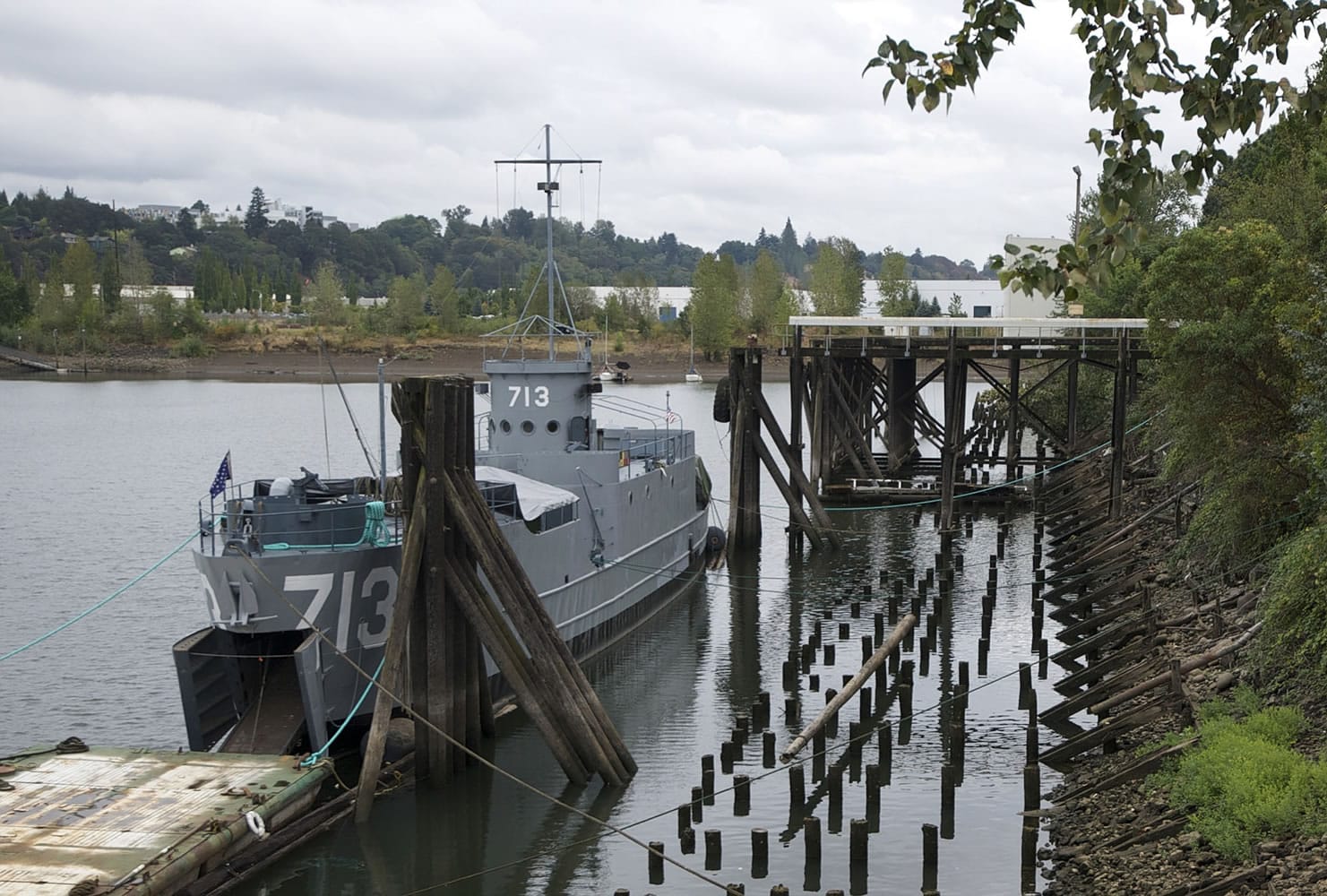One thing set LCI crewmen apart from just about everyone else in the Navy.
“You can say we were lousy sailors, because we deliberately ran our ships ashore, contrary to Navy custom,” Gordon Smith said.
Of course, faulty seamanship was not the reason. The men on Landing Craft Infantry ships — LCIs — delivered soldiers and Marines to invasion beaches during World War II.
“Our preference was to put them on dry sand,” said Smith, 93.
o Academy Award-winning actor Sir Alec Guinness — Obi-Wan Kenobi in the original “Star Wars” saga — commanded British landing craft LCI 124 during the invasion of Sicily in 1943.
This week, Smith and more than 40 other WWII Landing Craft Infantry veterans will get a chance to climb aboard a restored LCI as part of a reunion in Vancouver. The three-day event starts today at the Red Lion Hotel Vancouver at the Quay, 100 Columbia St.
About 140 people will attend, including 44 WWII landing-craft veterans; the other 100 or so are family members, history enthusiasts and other associate members of the National LCI Association.
The big attraction will be Saturday’s visit to LCI 713, now the home of the Amphibious Forces Memorial Museum. Once moored on the Oregon side of the Columbia River just west of the Interstate 5 Bridge, the LCI 713 now is docked at Swan Island in Portland.
Smith spent more than two years aboard a similar landing craft from December 1942 through January 1945. On LCI 43, he took part in five invasions: Northern Africa; Sicily; Salerno, on the Italian mainland; Anzio, about halfway up the Italian peninsula; and southern France.
Smith was a member of the bridge crew as a quartermaster. (In the Army, that means a supply job.) Although he was an enlisted man, Smith had taken a navigation class meant for officers and shared navigation duties with the executive officer.
Smith’s ship was one of about 920 LCIs built during WWII. Although it looks like a typical transport ship design, they’re scaled down: 158 feet long and 23 feet wide. They were manned by four officers and a crew of 24.
“It was the smallest ship in the Navy that was allowed to sail alone and not in a convoy,” said Dave McKay, the Memorial Museum’s historian.
They drew only six feet of water and had flat bottoms to facilitate beach landings.
They were designed to carry about 200 troops. On some LCIs, the soldiers or Marines hit the beach by way of landing ramps on the side of the ship. Other LCIs were built with doors in the bow; when the doors swung open, the troops stormed down a central ramp.
After delivering its contingent of troops, an LCI would back off the beach, thanks to a stern anchor it had dropped on the way in. A winch at the stern would reel in the anchor cable, pulling the landing craft off the beach and into deeper water.
If the LCI needed an assist, another ship could provide a tow; an Army tank outfitted with a bulldozer blade could even give it a shove.
Not in the first wave
They were not first-wave landing craft, said McKay, a retired Clark County sheriff’s deputy.
“They were more like fifth wave. They were too big, and they had no armor,” which made them easy targets for shore fire, McKay said.
“But four of them could put a battalion ashore — about 800 troops — in 10 minutes,” McKay said. “That’s a lot of people, real fast.”
As the war progressed, their mission was expanded.
“The Navy realized it needed more firepower” at the beach, McKay said. “It’s tough to hit a machine gun position from a cruiser that’s three miles out.”
Many LCIs were converted into gunships that could provide immediate covering fire with 40mm guns, 4.2-inch mortars or rockets.
“My uncle was a Marine,” McKay said. “He told me that at Saipan, they were taking fire from a sugar cane field near the beach.”
After a landing craft fired 300 rockets in 90 seconds, McKay said, “the sniping went to zero.”
McKay got into the LCI Association by way of his dad, who’d served on a landing craft during WWII.
Joe Flynn, an LCI official from California who plans to be at the reunion, said he’s a 1960s Army veteran with a similar story. He got interested in landing craft through his older brother.
Flynn was watching the classic WWII documentary series “Victory at Sea” on TV when his brother LaVerne spoke up.
“He said, ‘that’s my ship, the 347.’ “
And that’s about all LaVerne said.
“He talked very little about it,” Joe Flynn said. After LaVerne’s death, “I got interested in doing research for his seven children.”
He found a dozen of Laverne’s shipmates and also met other LCI veterans who shared their war stories.
Near the end of the war in the Pacific, “when we bypassed islands we didn’t need, we would use LCIs to encircle them and prevent the Japanese from resupplying them.”
The Japanese on those islands had a response: small boats with bombs and even suicide swimmers.
“Sailors would stand guard and shoot anything that floated, boxes, whatever. Sometimes they’d explode and they knew it was a swimmer.”
The public is welcome to drop by the convention and chat with the veterans.
“We’d love to see some students,” Flynn said. “This is first-person history.”
Vancouver veteran Gordon Smith still delights in telling one of his stories after 70 years. Not a story of WWII devastation, but of what he saw while his LCI 43 was crossing the Mediterranean with British Empire troops from Asia.
“They were Gurkhas, from Nepal. I was on the conning tower on a moonlit night, and they were dancing on the deck,” Smith said. “They were clapping hands, and one had a flute. They had robes on, and a sort of turban. Hollywood couldn’t have done it better.”




